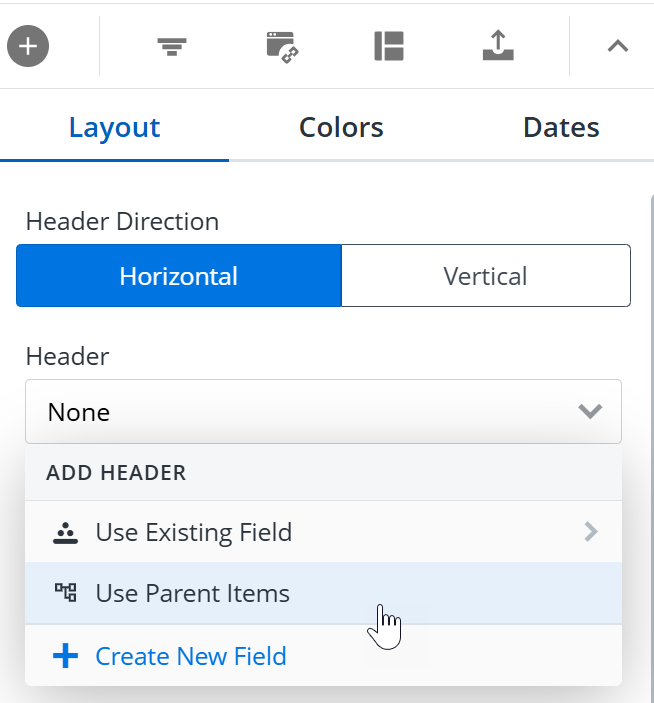Available on the following plans:
-
Business
-
Professional
-
Enterprise
Sub-items allow our users the ability to easily present a high-level strategic roadmap, in addition to presenting a more granular, tactical view. Users can visualize their sub-items in one of two ways on their roadmap: either grouped into their parent items or displayed as standalone items on the roadmap.
Any roadmap Owner, Collaborator with edit access, or Administrator can toggle between these two visualization options. To toggle between the grouped and standalone views for your sub-items, open the Quick Actions menu and select/deselect Standalone Sub Items:
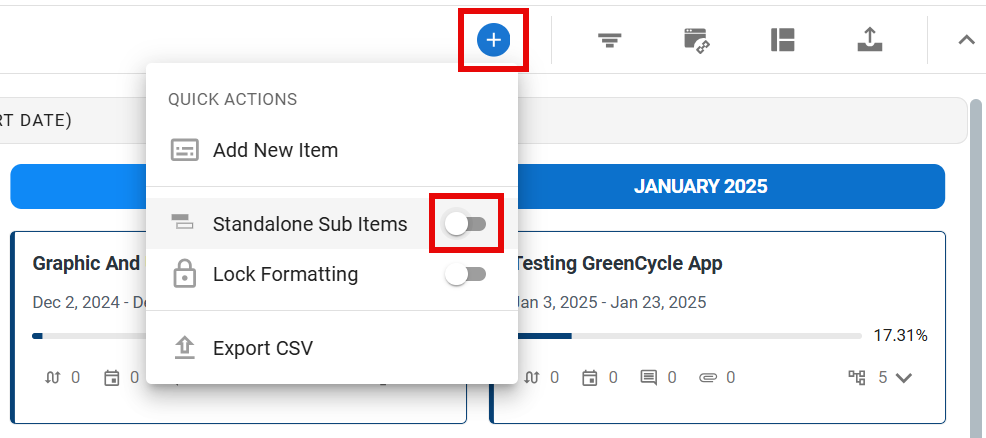
Visualizing Sub-Items in the Swimlane View
Parent Items in Swimlane View
In the Swimlane view, there are three ways that sub-items can be visualized:
Grouped Sub-items
When viewing sub-items in a grouped view, parent items can be easily identified by the small, clickable carat symbol in the top-right corner of the item. The parent item on your Swimlane can be moved throughout the Swimlane view in order to adjust the dates and field values of that item.
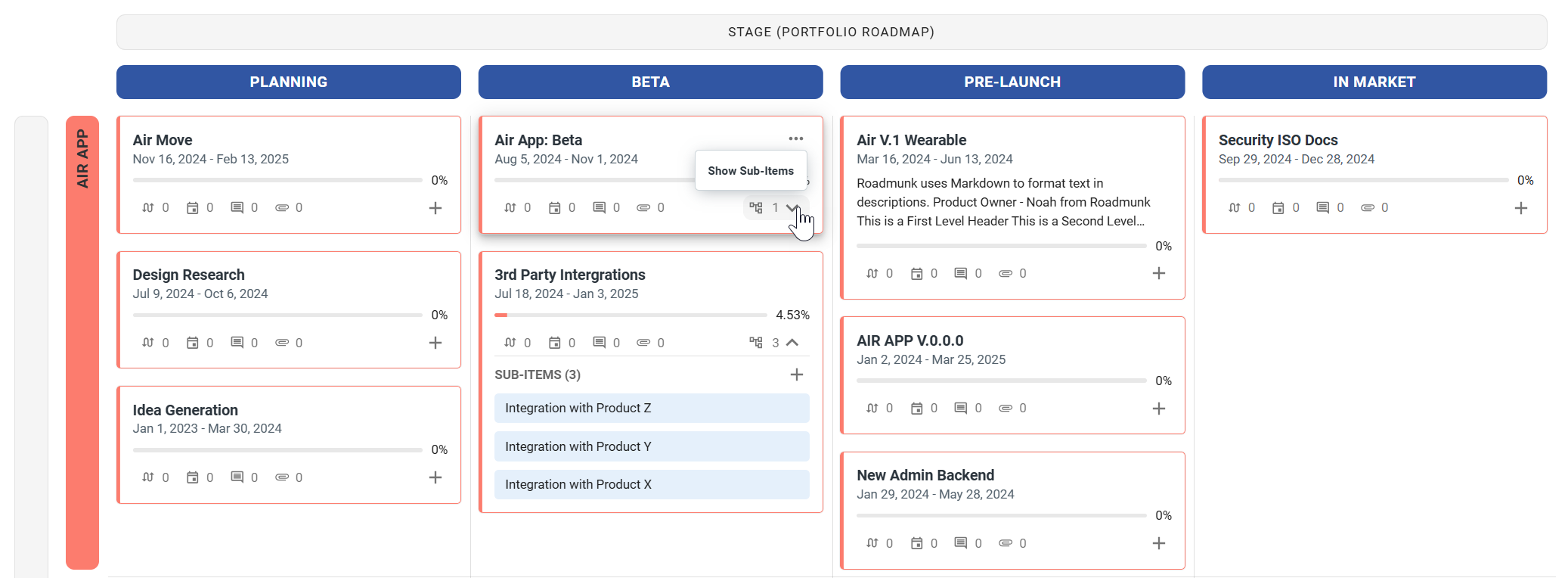
When working with grouped sub-items, child items can be displayed or hidden by selecting the small, clickable carat symbol in the bottom right corner of their respective parent items on the roadmap. Users are able to click into the sub-items shown in this collapsible menu in order to update field & description values, view and add linked items, and quickly navigate to a specific child item.
Standalone Sub-items
When viewing sub-items in a standalone view, parent items can be quickly located by looking for the items with the child-item top bars throughout the roadmap.
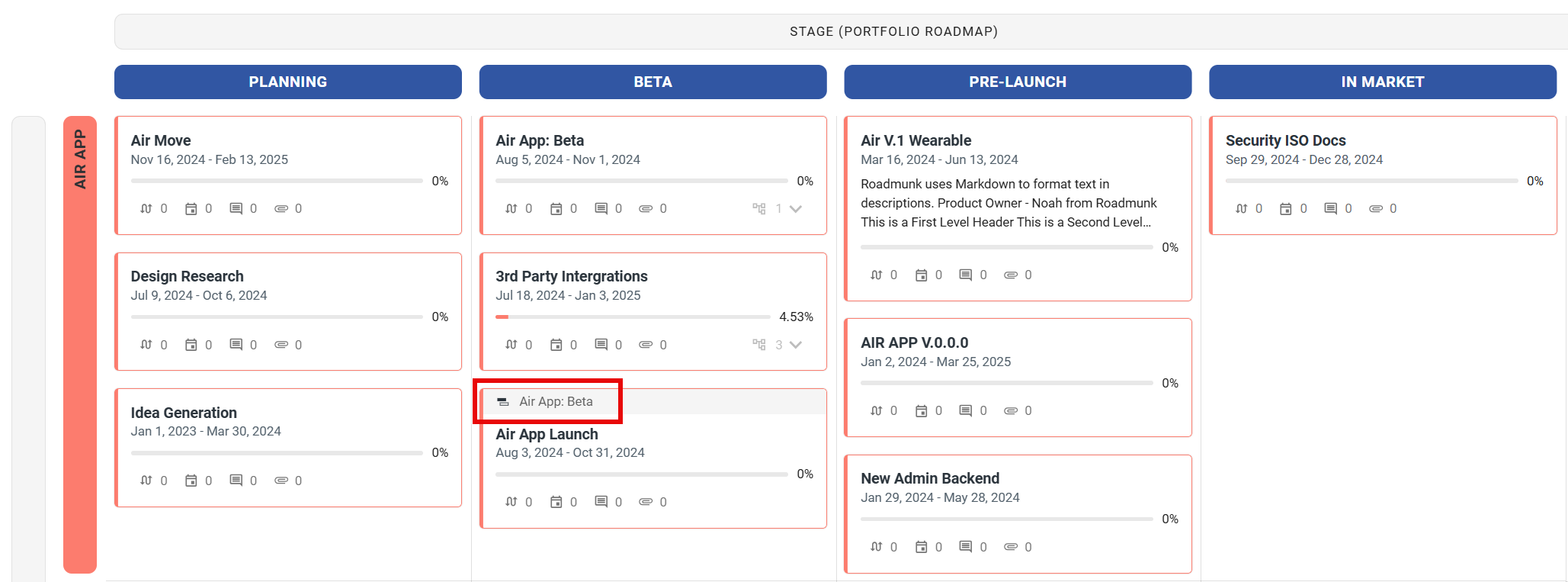
When working with standalone sub-items, child items will be visible on the roadmap as unique items and will be marked with a label indicating which parent item they belong to.
Parent Items as Headers
You can also set your column or row headers to Parent Items in order to visualize a breakdown of all your sub-items.
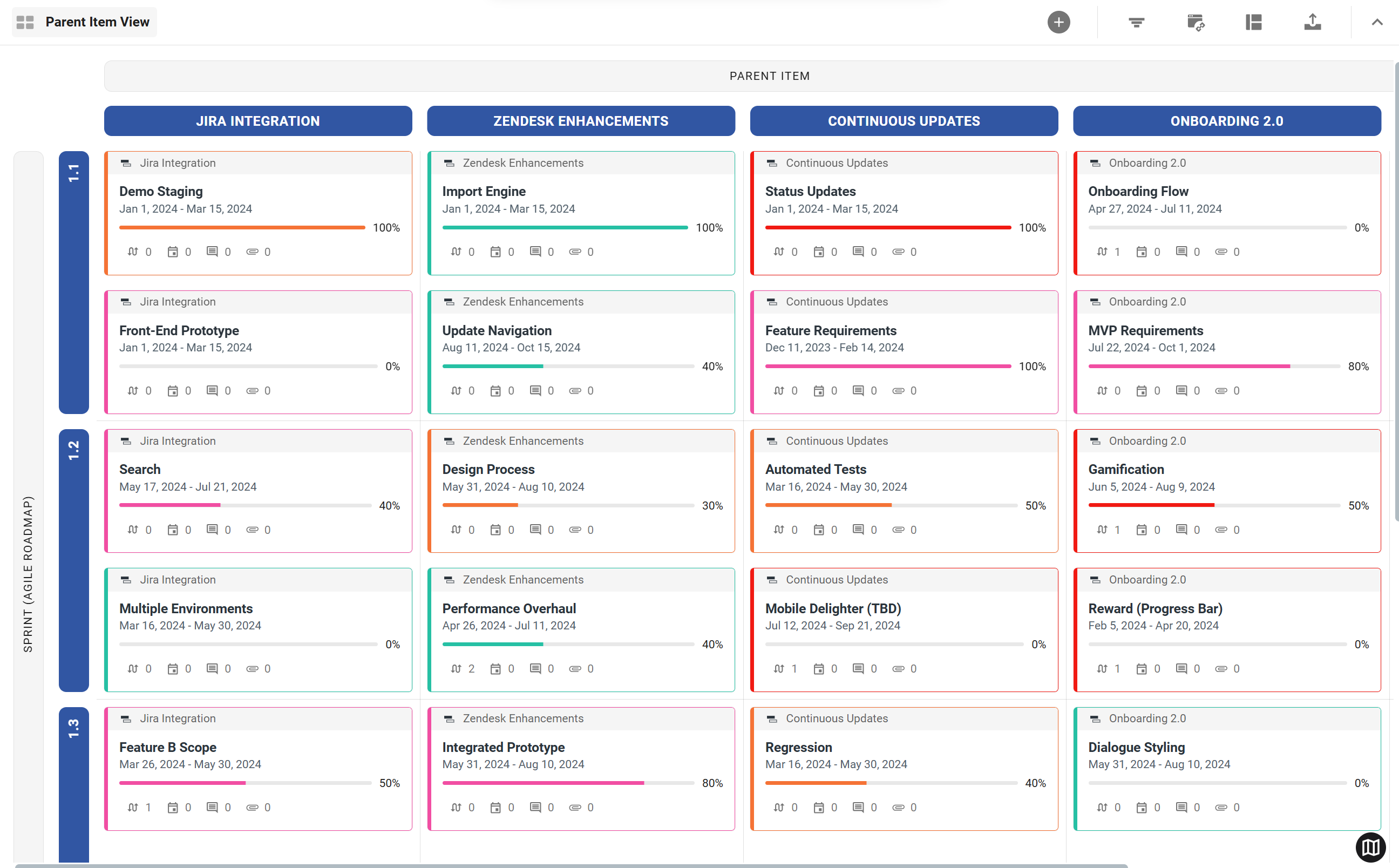
To use Parent Items for your column or row headers, open the Format menu and select: Column Header or Row Header | Change Column Header | Use Parent Items.
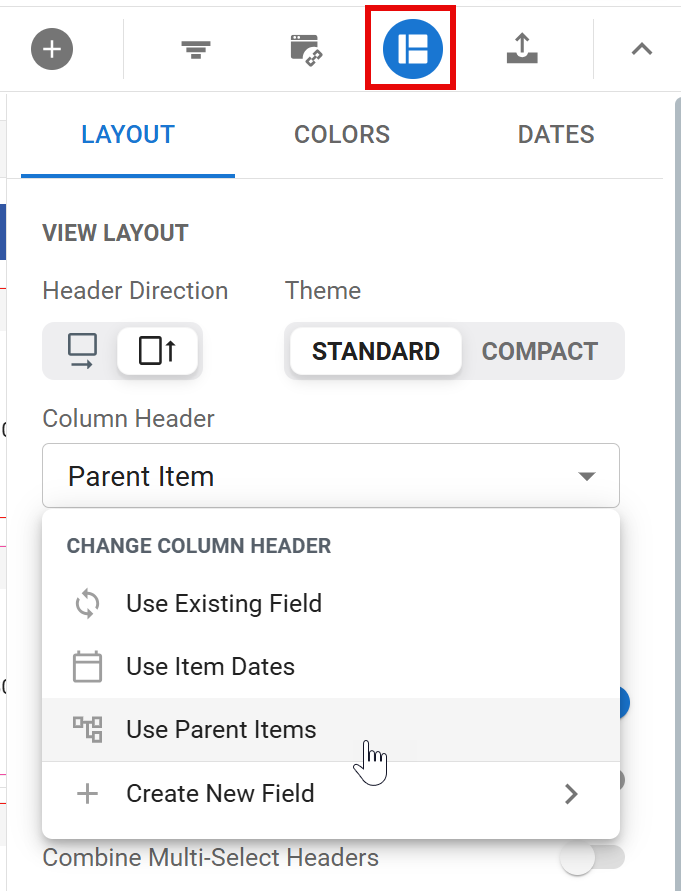
Sub-items & Buckets in Swimlane View
When working with items that have sub-items in the Swimlane view, users are able to continue using buckets (e.g. Soon, Future, etc.) in tandem with their specified time periods (e.g. Months, Quarters, etc.). When moving a parent item with specified dates into a bucket, all sub-items will have their dates removed and be placed in the corresponding bucket and any active key dates or linked items on those sub-items will be removed. Users will be prompted prior to making this change, in order to prevent the accidental removal of dates from their items and sub-items.
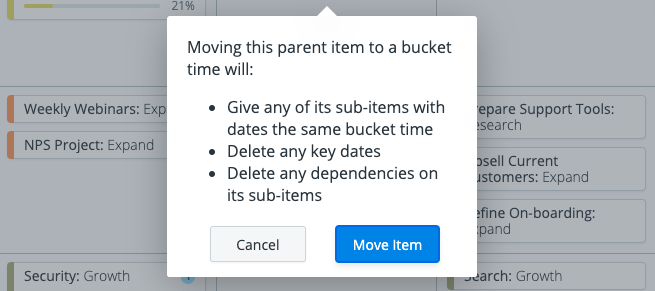
When items with sub-items are moved out of the buckets and back into a static date range, the parent item is automatically assigned the full number of dates for that time period (e.g. an item moved to January will be given a start date of the 1st and an end date of the 31st of that month) and the child items will retain the bucket value they were previously assigned.
Original sub-item durations, key dates, and linked items will not be restored when an item is moved back from a bucket into a static date range. Please make sure that you are acknowledging any in-app warnings before making these changes, as these details cannot be recovered once removed.
Visualizing Sub-Items in the Timeline View
Parent Items in Timeline View
In the Timeline view, there are three ways that sub-items can be visualized:
Grouped Sub-items
When viewing sub-items in a grouped view, parent items can be easily located by looking for the Sub-item symbol prefixing the label on the item. As with other standalone items, your parent items can be moved throughout the Timeline view - allowing you to create new streams, adjust item dates, and re-assign field values all by clicking and dragging the item to your desired location.
As the dates on parent items are locked to a specific duration based on their child items, you will not have the same controls to adjust the duration of parent items that you would on any other item.
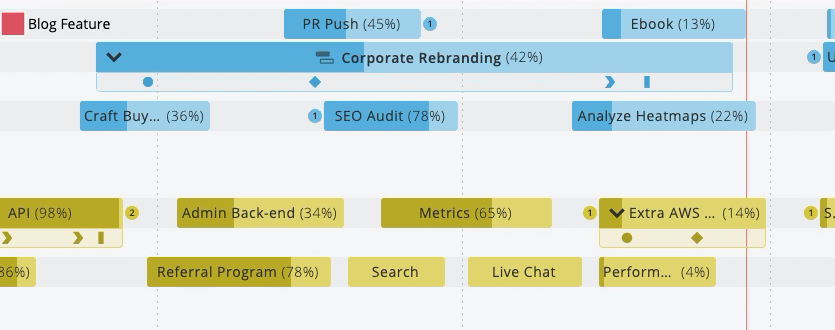
When working with grouped sub-items, child items are not directly visible on the timeline itself but are visible in the tooltip when by hovering over their respective parent items on the timeline. In this tooltip, users can easily click into the listed sub-items to access their item cards and update their details as needed.
Standalone Sub-items
When viewing sub-items in a standalone view, parent items can be quickly located by looking for the items with bold titles throughout the roadmap. Consistent with the behaviour of parent items in the grouped view, you will still be able to view a list of sub-items in the roadmap through the tooltip that appears on hover and the duration controls will be inaccessible from the parent item.
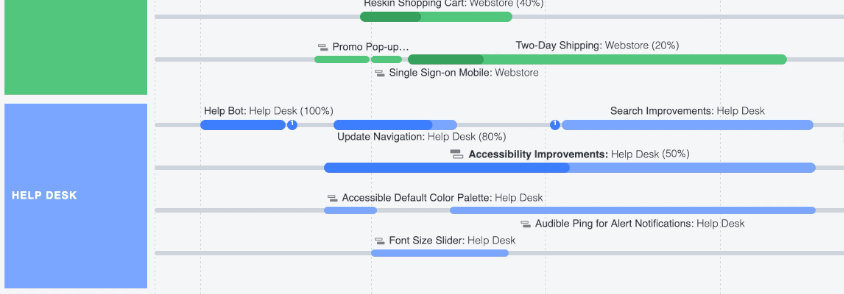
When working with grouped sub-items, child items are visible on the roadmap and noted by the inverse sub-item icon (shown in the screenshot above). Unlike the Swimlane view, there is no label showing which parent item the children belong to; however, hovering over a child item on the timeline will highlight the parent item, and vice versa. Additionally, for quick reference, holding your mouse over the parent item for three seconds will highlight only that family within the visualization.
Parent Items as Headers
You can also set your row headers to Parent Items in order to visualize a timeline of all your sub-items.
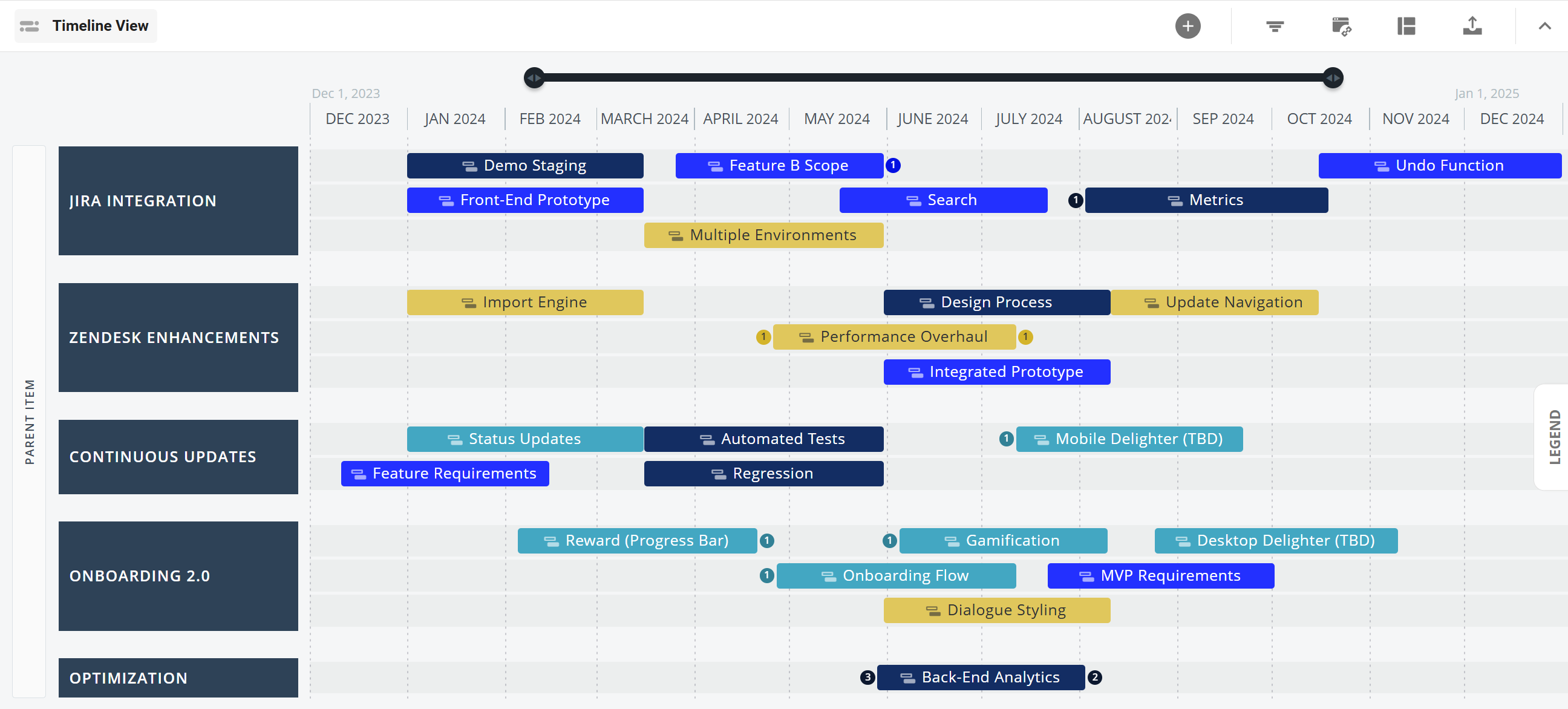
To use Parent Items for your column or row headers, open the Format menu and select: Column Header or Row Header | Change Column Header | Use Parent Items.
